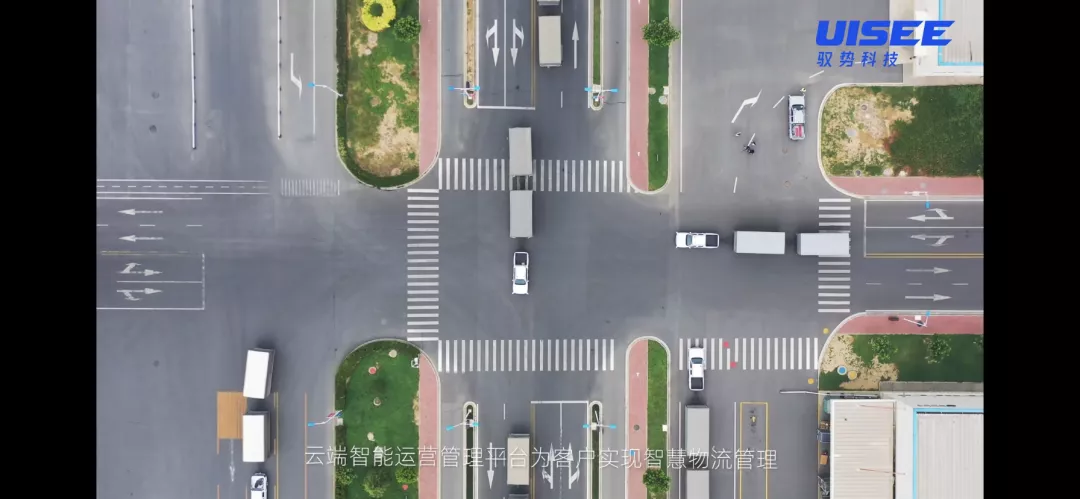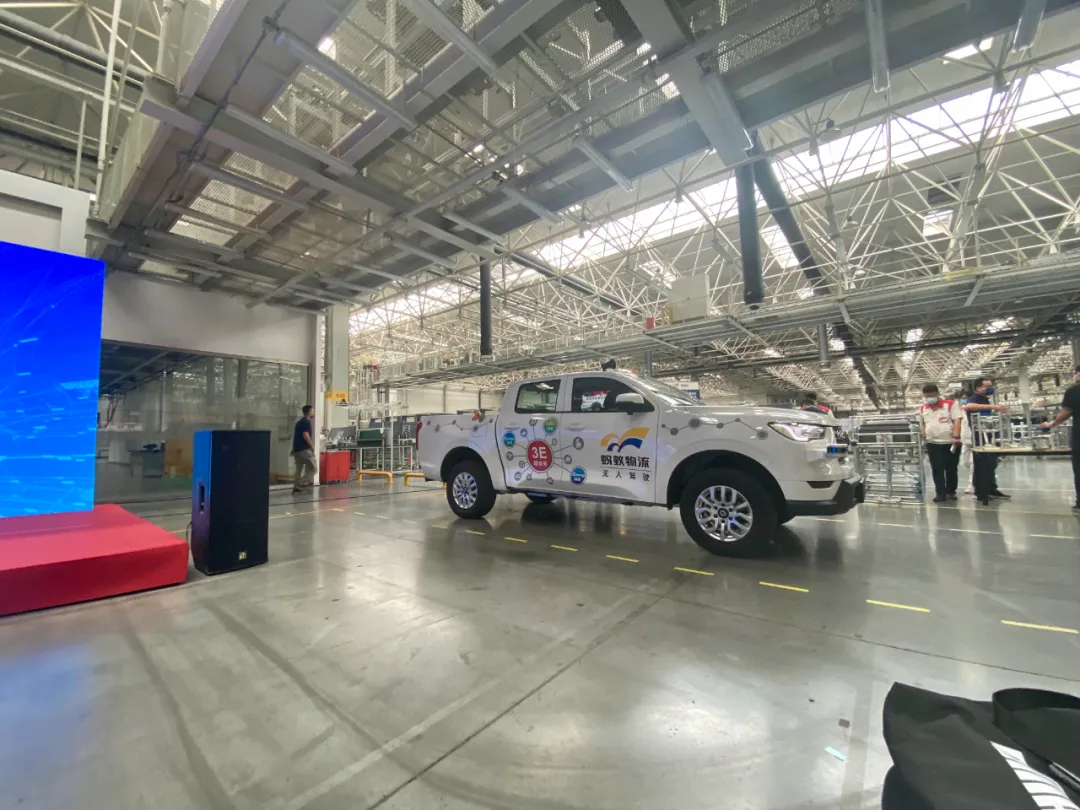Chengdu Travel Hundred People Media focuses on the evolution of the automobile travel industry chain
By Zheng Wen
In the factory area of Xushui, Great Wall, Baoding, the world is completely separated from its surroundings. West of Chaoyang Street, Malianying Village is an ordinary village that couldn’t be more ordinary, while on the spacious roads of the factory park east of Chaoyang Street, you can occasionally see Great Wall Cannon with two brown cars and a white body.
Upon closer inspection, the cockpit of the Great Wall Cannon is empty, and the brown cargo compartments are written in red letters: “Driving without a driver…”. This is precisely the most significant change of the recent Great Wall Ant Logistics – unmanned driving transportation in the park.

Yesterday, Great Wall Ant Logistics (a wholly-owned subsidiary of Great Wall Motor Co., Ltd.) announced that it would join forces with Youshi Technology to build a benchmark for intelligent automobile logistics, and jointly release an unmanned driving transportation project in the park. The project uses the first unmanned driving logistics vehicle based on the Great Wall Cannon EV, replacing traditional fuel vehicles driven by human power, to transport parts from various subsidiaries to the final assembly workshop in the Xushui factory area of Great Wall Motor.
In the park, we can see the Great Wall Cannon rushing back and forth, carrying out transportation work in an orderly manner.
As of now, more than 10 Great Wall Cannon EV unmanned driving logistics vehicles and 7 transportation routes have been deployed in the Xushui factory area of Great Wall Motor, covering three major parts workshops and two final assembly production lines for the transportation of automotive parts within the factory area.
They transport an average of 90 trips per day, and the total operational time of the project exceeds 6,000 hours, with a “real driverless” operating mileage of more than 15,000 kilometers. It is estimated that the use of unmanned driving logistics vehicles in place of human drivers has already saved 15 driver positions for double shift operations.
In the future, Great Wall Ant Logistics and Youshi Technology will gradually increase the number of unmanned driving logistics vehicles and operating routes based on the specific operational needs of the factory area, and promote them to more scenarios, continuing to expand the deployment and commercial application of unmanned vehicle fleets.
“Not pull people, only work”
Once upon a time, when it comes to “autonomous driving,” people first think of the highest form of autonomous driving scenarios, where the car can understand human instructions like a robot and successfully complete travel driving tasks.
But as companies like Waymo, which are pursuing the highest form of autonomous driving, face huge difficulties, the calm industry has begun to explore commercial landing methods.
 Two approaches are being taken to educate consumers about intelligent driver assistance starting from the lower levels in the passenger car industry. However, because of the challenges involved in carrying passengers, progress in this controversial field has been slow. The other approach involves starting with simple commercial scenarios, drawing inspiration from other business domains.
Two approaches are being taken to educate consumers about intelligent driver assistance starting from the lower levels in the passenger car industry. However, because of the challenges involved in carrying passengers, progress in this controversial field has been slow. The other approach involves starting with simple commercial scenarios, drawing inspiration from other business domains.
Cars with more advanced features no longer require the same level of sensitivity or safety precautions, simplifying the scenarios they face and reducing the number of complications they must handle. The Covid-19 pandemic has also catalyzed the development and implementation of autonomous driving technology.
New ideas have given hope to many autonomous driving enterprises, leading them to engage in various activities such as delivery, garbage collection, and street sweeping using unmanned vehicles in designated areas without carrying passengers. It is hoped that this limitation on their scope will prevent similar mishaps from happening again.
In fact, the underlying reason behind these phenomena is the transformation in the development of autonomous driving technology, which involves abandoning old maps and attempting to find new routes.
Since 2021, autonomous driving has once again become a hot topic in the capital market, with hundreds of millions of yuan raised in the first half of the year in related domains. Unlike the explosive logic of 2017, this round of funding is characterized by the gradual commercialization and practical application of scenario-based autonomous driving.
Enterprises such as Great Wall Ant Logistics and UISEE are collaborating in scenario-based logistic transport projects in closed-off park settings. These scenarios have the basic conditions for initial applications, such as relatively simple road environments, low hardware requirements, low costs, fewer vehicles on the road, combined autonomous and remote control driving, and ease of remote takeover in special situations. Specific regional scenarios can be known and controlled, and high-precision map drawing and updating requirements are low.
From a regulatory perspective, vehicles in areas such as factories, airports, and ports can be classified as “construction equipment” and not subject to the Road Traffic Law, making restrictions minimal. In addition, because the vehicles in these areas typically belong to the same entity, solving traffic accidents can be relatively easy.Feasibility of using autonomous driving technology is higher within an enclosed park. The top speed of autonomous driving vehicles within the enclosed park does not exceed 30 kilometers per hour, lower than the 40-80 kilometers per hour on roads. This reduces the time and processing power required for the entire information gathering to decision-making process. Also, the internal road conditions within the enclosed park are simple, with no pedestrians or animals crossing the road, and work vehicles and machinery are driven according to road directions, overall reducing the difficulty of implementing autonomous driving systems.
The Great Wall Cannon tow truck is towing several tons of parts and cargo at a speed of 15-20 kilometers per hour in the park. However, in the application scenarios within the Xushui Park, the traffic conditions are relatively more complex than those in enclosed parks, with crowds, electric bicycles, and non-autonomous driving trucks present in the park.
However, these scenes also have certain limitations. For example, the market space is limited, and partners are relatively independent. More scenarios need to be actively developed. In addition, poor transferability of technical scenarios may also be a certain obstacle. Different scenarios are subject to characteristics of the scenario itself, and their solutions are difficult to replicate.
Zhang Shizheng, deputy general manager of Great Wall Ant Logistics Co., Ltd. said: “Through the bulk application of this Great Wall Cannon EV unmanned logistics vehicle in cooperation with Yosun Technology, we hope to create a more efficient, safe, and low-cost logistics transportation mode. I believe that this is only the beginning, and the industry’s changes have to be actively learned and embraced, and innovation is endless.”
This unmanned logistics vehicle developed based on the Great Wall Cannon EV model is equipped with Yosun Technology’s self-developed U-Drive® intelligent driving system, capable of intelligent recognition of traffic lights, autonomous avoidance of pedestrians, stable lifting door passage. It can also achieve fully unmanned transportation in rainy days and nights, and supports L4 level autonomous driving in multiple scenarios, suitable for a variety of complex indoor and outdoor work conditions as well as harsh weather such as rain, fog, and snow, effectively solving the problem of logistics transportation in factories and large logistics parks.
Who is Yosun Technology?
In 2016, in the wave of autonomous driving, Yosun Technology was born in an underground garage. In the following 5 years, the founding team including Wu Gansha, Zhou Xin, Peng Jinzhan, and Jiang Yan, developed the company to nearly 500 people (80% of whom are developers and research staff), self-developed a set of intelligent driving systems called U-Drive®, and formed a scalable deployment solution.# U-Drive® Intelligent Driving System: Towards Multi-Scenario and Advanced Autonomous Driving
U-Drive® intelligent driving system, designed for multi-scenario and advanced autonomous driving, consists of three core technology modules: key autonomous driving algorithms, full-featured vehicle-grade intelligent driving controller and cloud-based intelligent driving service platform. It can adapt to a large number of mainstream vehicle models and has vast commercial application scenarios. At the same time, it has self-upgrading capabilities and will continue to open and strengthen more autonomous driving functions, software and applications, ultimately achieving unmanned driving on open roads.
Mass Production is the Key to Success
Although the answer sheet appears clean and concise, the journey to success was not as smooth sailing as a plain piece of paper. In Wu Gansha’s fifth anniversary letter to U-Drive® Technology, “ups and downs” was the theme, which also reflects the theme of the autonomous driving industry.
Over the past five years, there were no soaring triumphs or solid ground, but rather a fluctuating sea. Like a sailboat, U-Drive® Technology set sail in the wind of AI’s rise and advancement, and sailed away from the safe harbor.
Through wind and waves, day after day, we keep paddling, adjusting the direction of the sails, and heading towards the deep sea. However, looking back, we are not far from where we started from. Fortunately, “we were not washed back by the past”, and the coastline we left behind is no longer within our reach. All we can do is move forward.
In this fiercely competitive arena, mass production is a key indicator of commercialization capability. Mass production means the possibility of stage-by-stage profitability, and it provides the foundation for product upgrades, data accumulation, and technological iteration.
At the time of commercialization, all vision and ideals must be temporarily put aside. Commercialization requires a balance between functionality, delivery, and cost. On the basis of acceptable cost, the product must be user-friendly and convenient, which is very practical. Indeed, during the communication between AutocarMax and U-Drive® Technology, it was mentioned that the current cooperation with Great Wall Motors is also based on a relatively high cost-effective plan.
At present, U-Drive® Technology can conduct regular unmanned driving operations. In U-Drive® Technology’s view, autonomous driving technology must achieve the nine words of “all-scenario, truly unmanned, and all-weather” to truly be called unmanned driving.
“Truly unmanned” means no safety personnel. Since the end of 2019, “truly unmanned” vehicles have been put into operation, and U-Drive® Technology has not encountered any accidents caused by the unmanned driving system yet with a scale of about 100 vehicles in regular operation;
“All-weather” means working in a 007-work system, operating around the clock, not only covering routine scenarios, but also including nighttime and adverse weather conditions.Yutong Technology is committed to developing universal autonomous driving technology for all scenarios, even for use on open roads, to quickly adapt to logistics, public transportation, passenger vehicles, delivery and other scenarios.
Since the beginning of this year, Yutong Technology has achieved a series of collaborative achievements:
- In February, it teamed up with international chemical giant BASF to jointly build smart factories in the chemical industry.
- In March, it joined hands with Dongfeng Motors to create the Dongfeng Autonomous Driving Navigation Project, which officially opened RoboTaxi trial ride services to the citizens of Wuhan.
- In June, when the epidemic broke out in Guangzhou, the unmanned logistics vehicle developed by Yutong Technology was put into normal operation at the Guangdong Dongguan production base of XuFuJi, responsible for the transportation of food raw materials within the factory area, and provided logistics support to fight the epidemic through “zero” contact.
The list is still being written…
Quantitative change is necessary preparation for qualitative change. When you are full after eating the eighth bun, the contributions of the first seven buns are equally important.
Perhaps, when we look back in 2030, today’s applications may seem childish, but they are the most concrete images in this movie of autonomous driving development.
This article is a translation by ChatGPT of a Chinese report from 42HOW. If you have any questions about it, please email bd@42how.com.